These are the most endangered structures in Iowa in 2022, including the Des Moines birthplace mural
As the Cedar Rapids Community School District prepares to demolish 10 of its elementary schools, nonprofit group Preservation Iowa is highlighting their historic significance.
One holds a mural painted by a pupil of famed Iowa painter Grant Wood, the creator of "American Gothic." Another was built to celebrate the Wright brothers' connection to Cedar Rapids, where they lived for a few years in their childhood and developed an early interest in flying. It looks like an airplane in flight when seen from the air. Another has an uncommon fortress/castle design.
They are featured on Preservation Iowa's annual Most Endangered Properties list for 2022. Others include a one-room schoolhouse in Muscatine County and a mural depicting the history of Des Moines, located at the site of the city's birthplace.
The historic preservation group says it compiles the annual list to "educate Iowans about the special buildings and historic sites that are slowly and gradually slipping away from us." It works to help owners of historic structures find grants and other resources.
In many cases, the inclusion of sites on the list has brought preservation funding and inspired efforts to save them.
Here's a look at the seven properties that made the 2022 list.
More: These are the most endangered buildings in Iowa in 2021, including Hy-Vee's first store
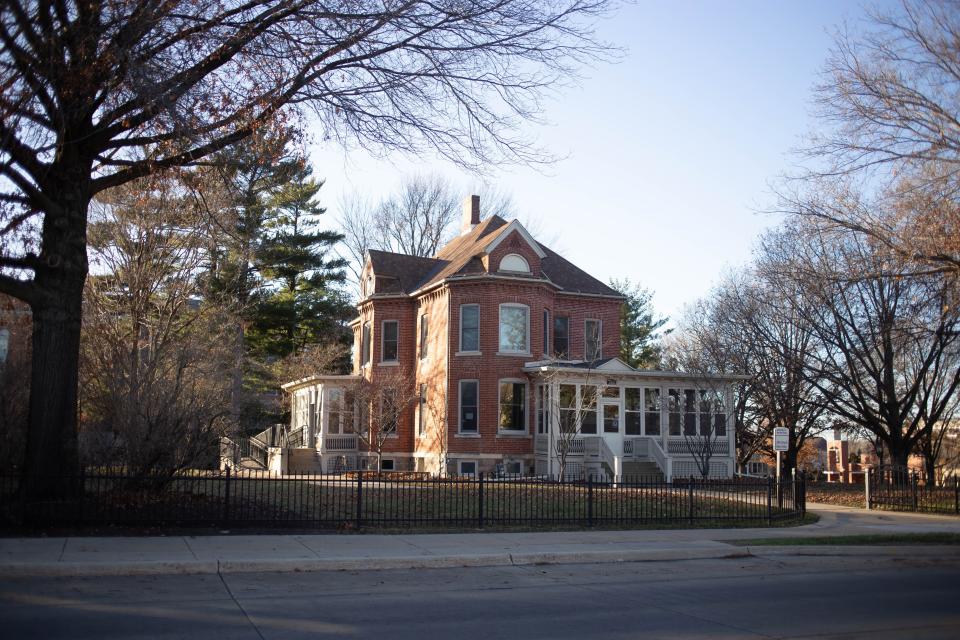
Homer Seerley Home
Billed as the oldest building on the University of Northern Iowa campus, the home was built in 1890 as the residence of Homer Seerley, who served as the college's second president. It later served as a hospital for students, Seerley's retirement home and the residence of two other administrators, and housed the university's Ethnic Minorities Cultural and Educational Center for about 30 years. Today it's the home of the university's honors program.
The Queen Anne-style house was built by Cedar Falls architect J.E. Robinson, who went on to become the superintendent of the building program at UNI in 1895. He was responsible for many of the historic buildings on the campus today.
Many of the original features of the Seerley home remain, like the limestone foundation, staircase and a fireplace.
University officials have requested permission from the Iowa Board of Regents to demolish the home, citing $1.6 million in deferred maintenance costs, according to student newspaper The Northern Iowan. The regents voted to table the decision, and it's not listed on the agenda for the board's next meeting Feb. 23.
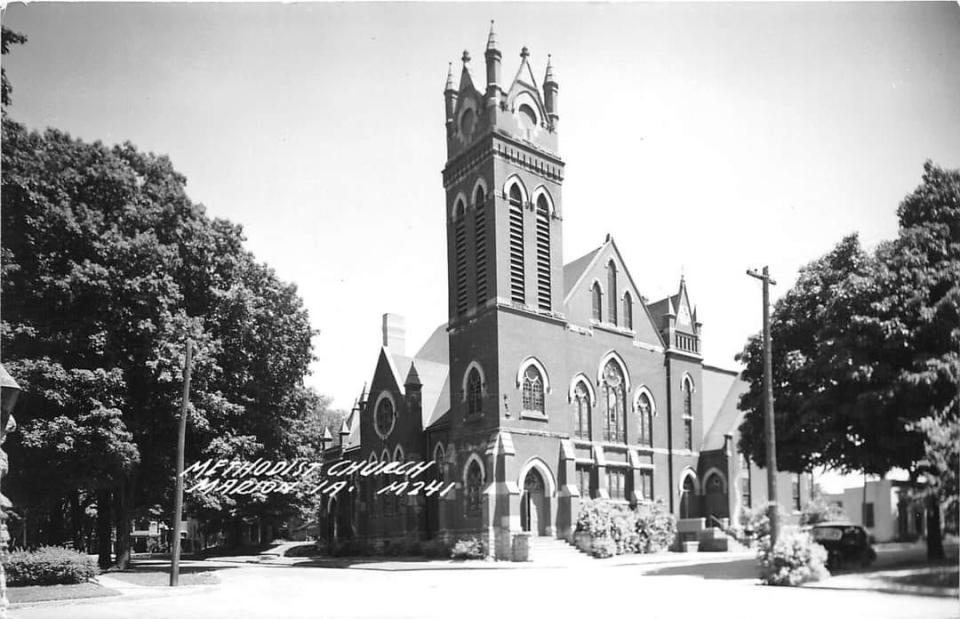
Marion Methodist church
The church, built in 1896 in downtown Marion, was damaged in the 2020 derecho, with its interior exposed to the elements since.
The Gothic-style structure has arched windows and doorways and a 100-foot-tall bell tower with four spires and circular windows at the apex. It served as a Methodist church until 2019, when it was purchased by First Pentecostal Church of Cedar Rapids.
Since the storm, the church has applied for a demolition permit, according to Preservation Iowa.
"The loss of this building would significantly change the skyline and historic nature of the Uptown Marion District and impact the momentum the district has achieved since becoming an Iowa Main Street district in 2013," Preservation Iowa wrote. "There has been major reinvestment into the historic district despite the derecho storm and COVID pandemic."
The group says city officials are willing to work with developers on an adaptive reuse of the building.
More: 'Drastic things could happen' if owners don't repair long-vacant Ingersoll theater, city warns
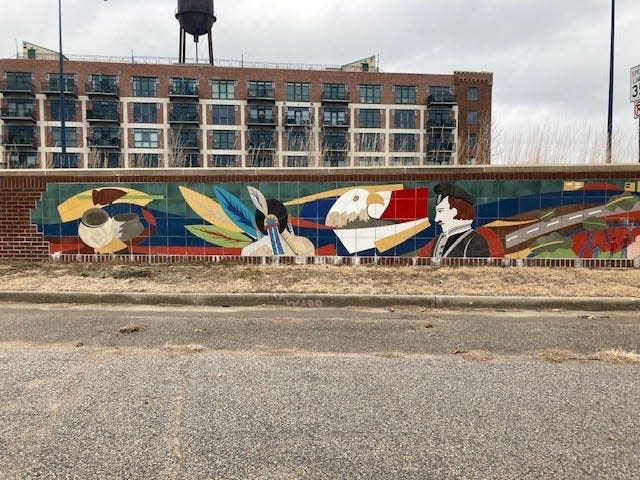
Des Moines birthplace mural
This 34-foot-long mural is made of more than 500 painted porcelain tiles, arranged to depict the history of Des Moines. Artist Hilde DeBruyne created it in 2010 on a wall at the location of Fort Des Moines, a military post built in 1843 near the confluence of the Des Moines and Raccoon rivers.
All the original buildings on the site, now home of Principal Park, are long gone, but an 1840s log cabin was moved there from Washington County to mark Des Moines' birthplace.
More: Our Des Moines: The storied history of a former church now threatened with demolition
The mural, near the cabin and facing a parking lot, is exposed to the elements, with water damage causing some of the tiles to pop out of the wall. According to Preservation Iowa, the city is obtaining cost estimates for moving and preserving the mural at a protected site.

Cedar Rapids elementary schools
A massive facilities plan approved in January 2018 by the Cedar Rapids Community School District board calls for demolishing and replacing 10 elementary schools and closing eight, according to Little Village magazine. Just three are slated for renovation.
Preservation Iowa says all of the buildings, each with its own unique history, are structurally sound and in good condition.
"The schools listed for demolition and replacement are in imminent danger while those listed for closing also could be lost as there are no plans for them to be repurposed," the group wrote.
More: Proudfoot & Bird architectural legacy gives Des Moines something worth preserving
The two oldest schools, Garfield and Arthur, opened in 1915. Garfield Elementary remains a rare example of Egyptian Revival architecture, with hardwood floors and natural woodwork. Arthur Elementary was built in an uncommon fortress/castle design and retains many original features, including transom windows and oak woodwork.
Preservation Iowa considers Harrison Elementary to be the most architecturally significant. It opened in 1930 with an English Tudor and Gothic design created by Cedar Rapids architect Harry Hunter. The interior includes a mural created by artist William Henning, a student of renowned Iowa artist Grant Wood.
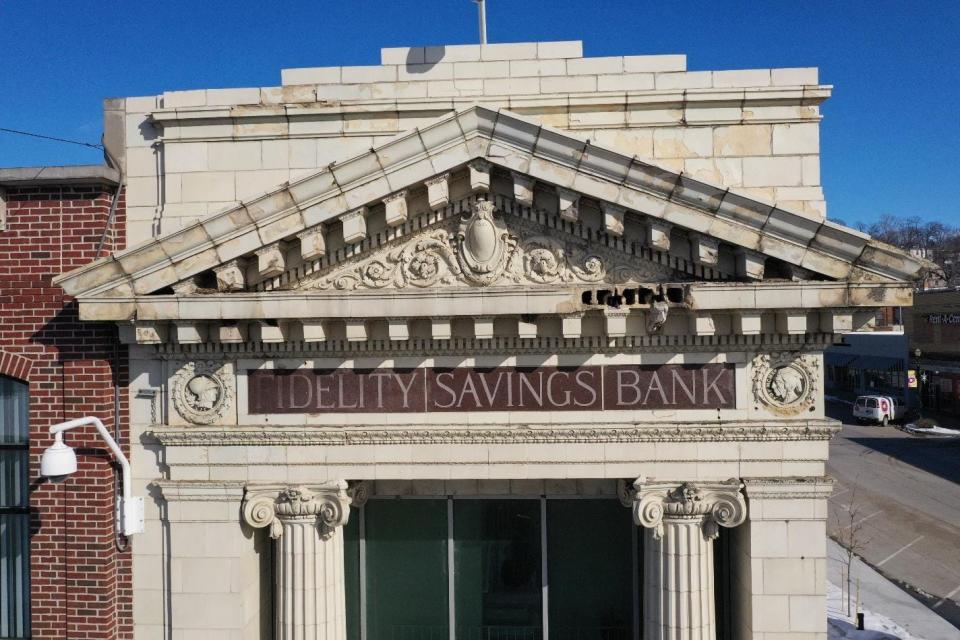
First National Bank building
Located in Ottumwa, the First National Bank building at 131 E. Main St. is an example of Neoclassical Revival architecture. Its front entrance features monumental columns in a temple style. Monumental pilasters and terra cotta parapet caps run the entire length of the building, separating the 10 sets of second-floor windows.
First National Bank opened in 1915 but closed after the Great Depression. It later became Fidelity Savings Bank.
Ottumwa in 2020 acquired the vacant property, which was "packed floor to ceiling with debris, tools, antiques and rubbish," according to a request for proposals to renovate the building released by the city. The city is pursuing an Iowa Rural Heritage Revitalization Grant to help stabilize the facade's terra cotta and is seeking a developer who can purchase and restore the building.
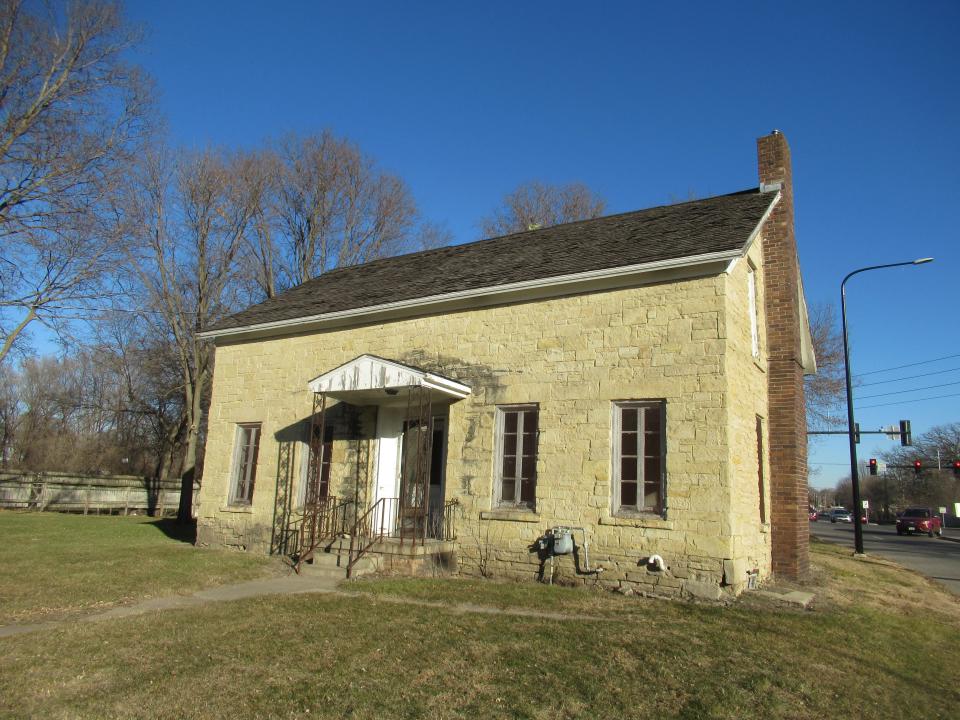
Dunsmore House
Billed as the oldest limestone building in Waterloo, Dunsmore House was built in 1866 and is named for John F. Dunsmore, an employee of the Illinois Central Railroad who lived there during the last quarter of the 19th century. It was built by Thomas Chadwick, a master stonemason who emigrated from England.
Waterloo acquired the historic property about 20 years ago and it's been sitting empty since. "It is in very dilapidated condition," according to Preservation Iowa.
The city has designated funds for a portion of the needed repairs, but not enough to return the building to use, the group said.
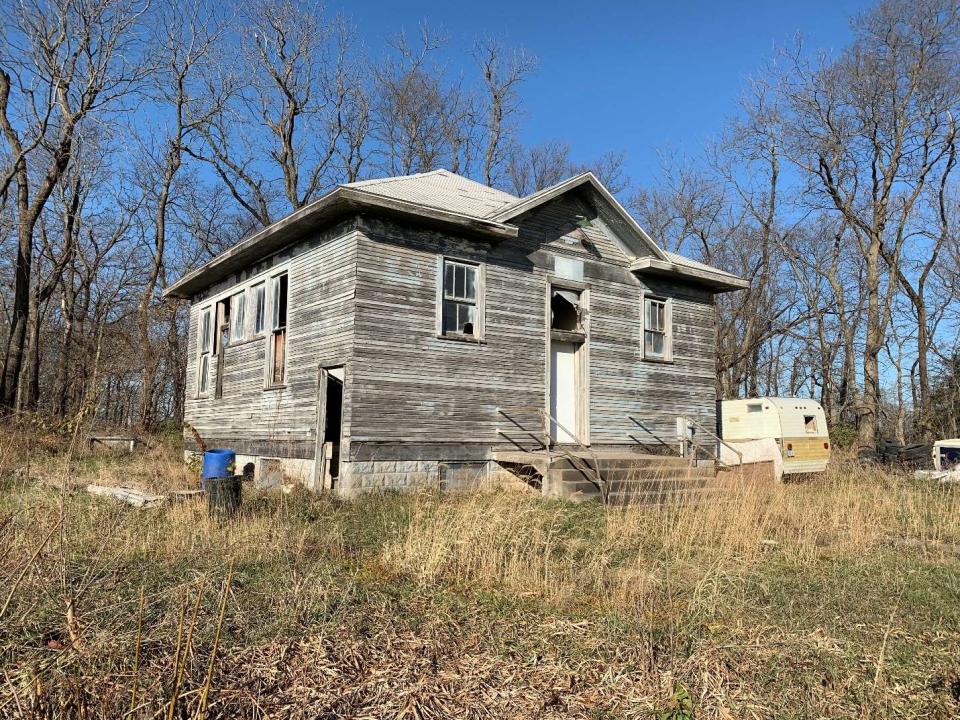
Lacey School
Built in 1929, the Lacey School is one of the few country schoolhouses remaining in Muscatine County. The one-room schoolhouse near Nichols was built to replace an 1800s schoolhouse located nearby.
The school closed in 1946 and was later used as a Grange hall. Much of its original exterior remains, including its clapboard siding, wood-sash windows and a pediment with cornice returns above the entry door. It also sits on the original rusticated concrete block foundation.
Preservation Iowa says the private owner originally intended to convert the schoolhouse into a residence, and has now expressed interest in selling it.
"There is the danger that it would be demolished by a new owner," the group says.
The Muscatine County Historic Preservation Commission and the Friends of Historic Nichols are considering whether to purchase and restore the property.
Kim Norvell covers growth and development for the Register. Reach her at knorvell@dmreg.com or 515-284-8259. Follow her on Twitter @KimNorvellDMR.
This article originally appeared on Des Moines Register: Annual list names the Iowa structures considered most endangered

